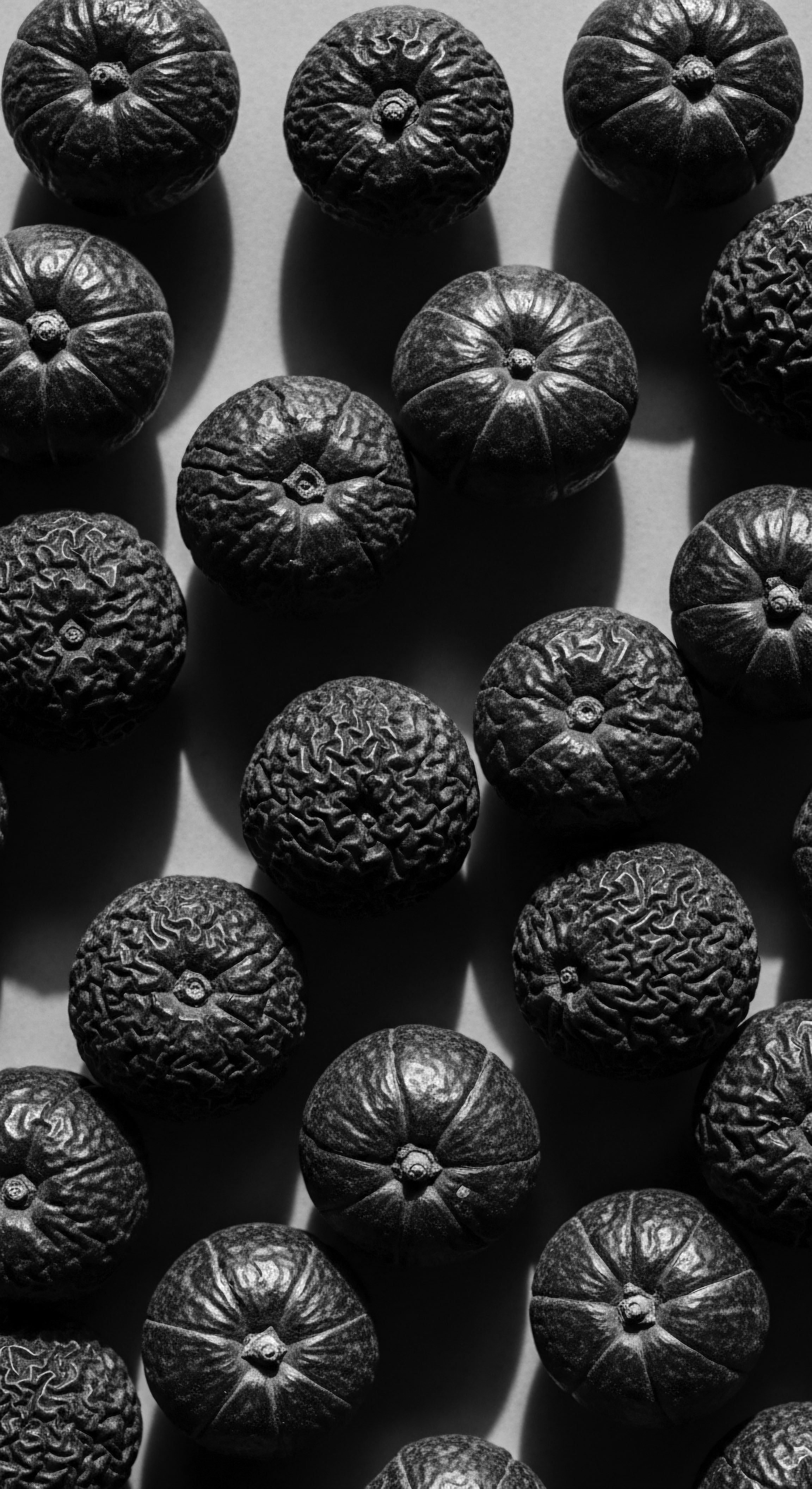
Roots
For those of us whose lineage carries the legacy of textured hair, the story of its care is not simply a chronicle of beauty routines; it is a profound echo of heritage, a whisper from ancestors who understood the very soul of a strand. How traditional methods shielded textured hair reaches far beyond superficial adornment, delving into the core of communal well-being, spiritual connection, and ingenious adaptation to the natural world. This is not a detached historical accounting, but an invitation to listen, to feel the enduring wisdom in each twist, braid, and nourishing balm.
Consider the hair itself ❉ a marvel of elemental biology. Textured hair, with its unique helical structure, presents a distinct set of needs, prone to dryness and breakage if not tended with mindful intention. Yet, this very structure, often seen through a contemporary lens as a challenge, was, for generations past, a canvas for expression and a testament to resilience.
The historical understanding of hair’s anatomy, while not articulated in modern scientific terms, was intimately known through practice and observation. The coil, the kink, the curl – each was a biological reality, yes, but also a symbol, a map, a language.
Ancestral communities recognized the hair’s delicate nature, its tendency to seek moisture, and its susceptibility to environmental stressors. This awareness birthed a wealth of traditional methods designed to safeguard its integrity. These practices, rooted deeply in cultural contexts, formed a protective shield, allowing textured hair to flourish despite sun, wind, and the rigors of daily life. The wisdom of these approaches was passed down, not in textbooks, but through the tender touch of hands, the communal rhythms of styling sessions, and the shared knowledge of botanicals.

What Did Ancestors Know About Hair Anatomy?
While the precise terminology of modern trichology was absent, ancestral communities possessed an intuitive, experiential understanding of hair’s physical attributes. They recognized that certain hair types were more susceptible to dryness, requiring consistent moisture. This observational knowledge led to the development of specific techniques and the selection of particular natural ingredients that addressed these inherent qualities.
The very act of braiding or twisting hair close to the scalp, for instance, speaks to an understanding of how to reduce exposure and mechanical stress on individual strands. They knew, without a microscope, that the hair needed to be kept together, to be protected from the elements, and to be nourished from root to tip.
The classification systems, though not formalized in a universal scientific manner, were embedded within social structures and practices. Hairstyles often communicated a person’s age, marital status, social rank, or tribal affiliation. The Yoruba people of Nigeria, for example, crafted intricate hairstyles that symbolized community roles, while the Himba tribe in Namibia wore dreadlocked styles coated with red ochre paste, symbolizing their connection to the earth and their ancestors.
Ancestral hair care was a testament to intuitive understanding, where protective styles and natural ingredients formed a shield for textured hair.
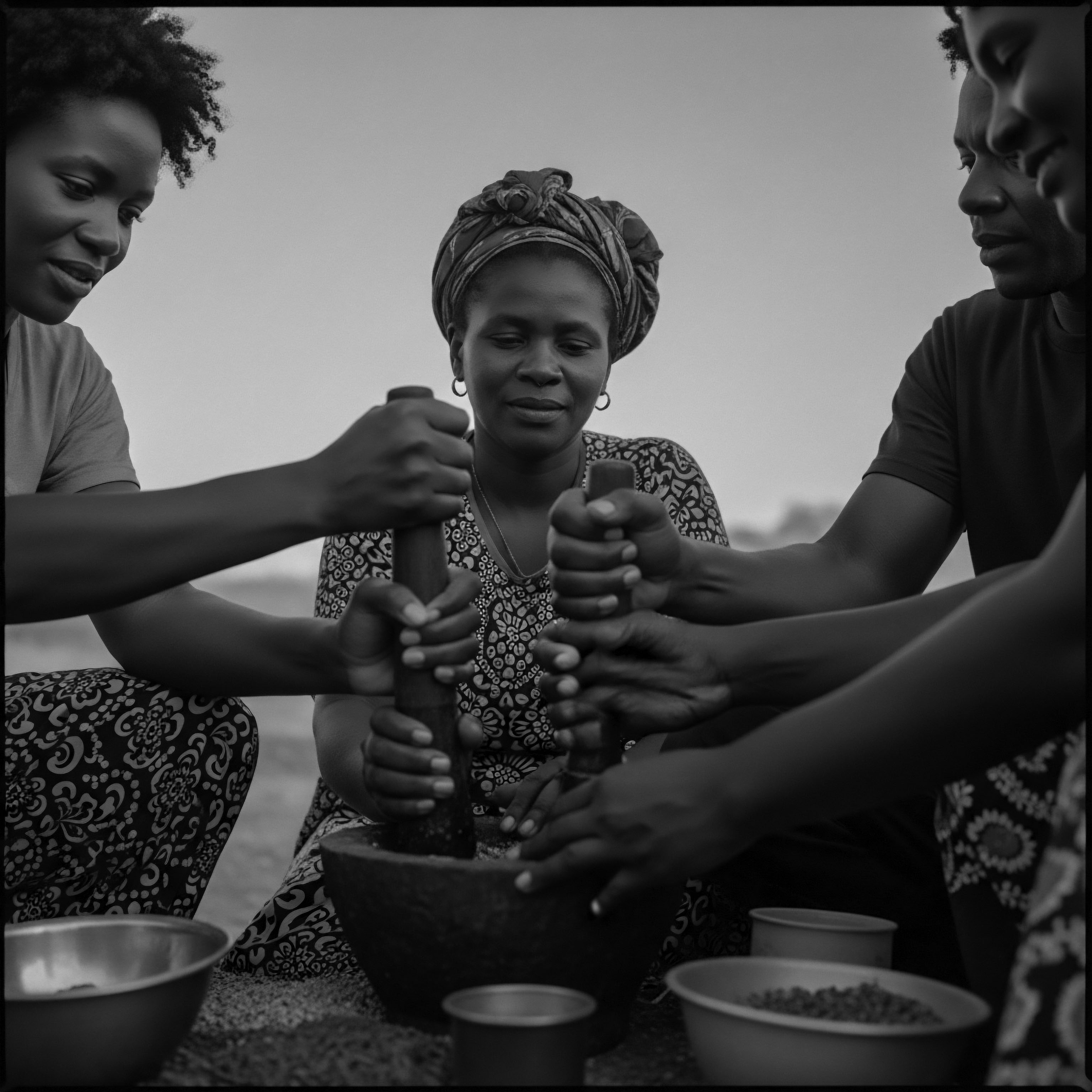
How Did Traditional Lexicon Describe Textured Hair?
The language used to describe textured hair in traditional settings was often rich with metaphor, connecting hair to nature, lineage, and spiritual concepts. Words were not merely descriptors; they carried the weight of cultural meaning and reverence. Terms for different curl patterns or textures might have been linked to natural phenomena, animal characteristics, or even specific agricultural cycles, reflecting a deep connection to the environment that sustained them.
This lexicon was a living archive, conveying generations of accumulated wisdom about the hair’s characteristics and its optimal care. It was a language of respect, acknowledging hair as a vital part of self and community.
Hair growth cycles, though not mapped in scientific charts, were implicitly understood through seasonal changes and life stages. Traditional practices often aligned with these natural rhythms, with certain styles or treatments reserved for specific times of the year or for individuals transitioning through different phases of life. This holistic perspective considered hair not in isolation, but as part of a larger, interconnected system of being.
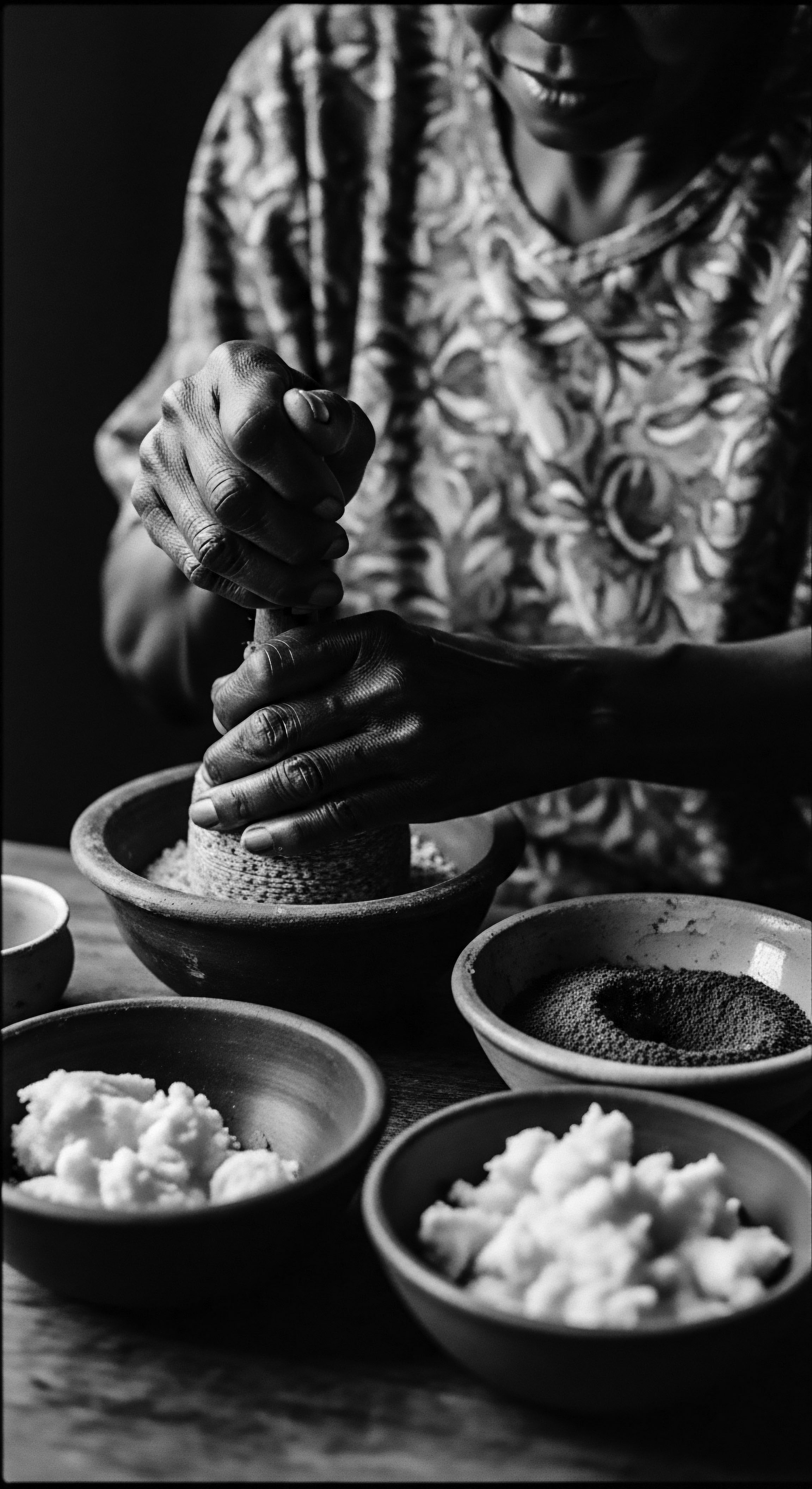
Ritual
Stepping into the realm of traditional hair care is to enter a space where every touch, every ingredient, and every style was part of a living ritual. This is not merely about preserving hair; it is about preserving a way of life, a heritage of care that extends through generations. When we consider how traditional methods shielded textured hair, we are looking at practices that were born of necessity, refined by observation, and imbued with cultural meaning. The answers to our queries about protection lie in these ancient applications, techniques, and communal gatherings that shaped hair’s destiny.
The evolution of styling techniques for textured hair, particularly those designed for protection, traces a direct line back to ancestral ingenuity. These styles were not only aesthetically significant but also highly functional, designed to minimize environmental exposure and mechanical stress. Braids, twists, and locs, recognized today as “protective styles,” have roots stretching back thousands of years in African cultures. They were, and remain, a blend of art and science, a testament to enduring wisdom.
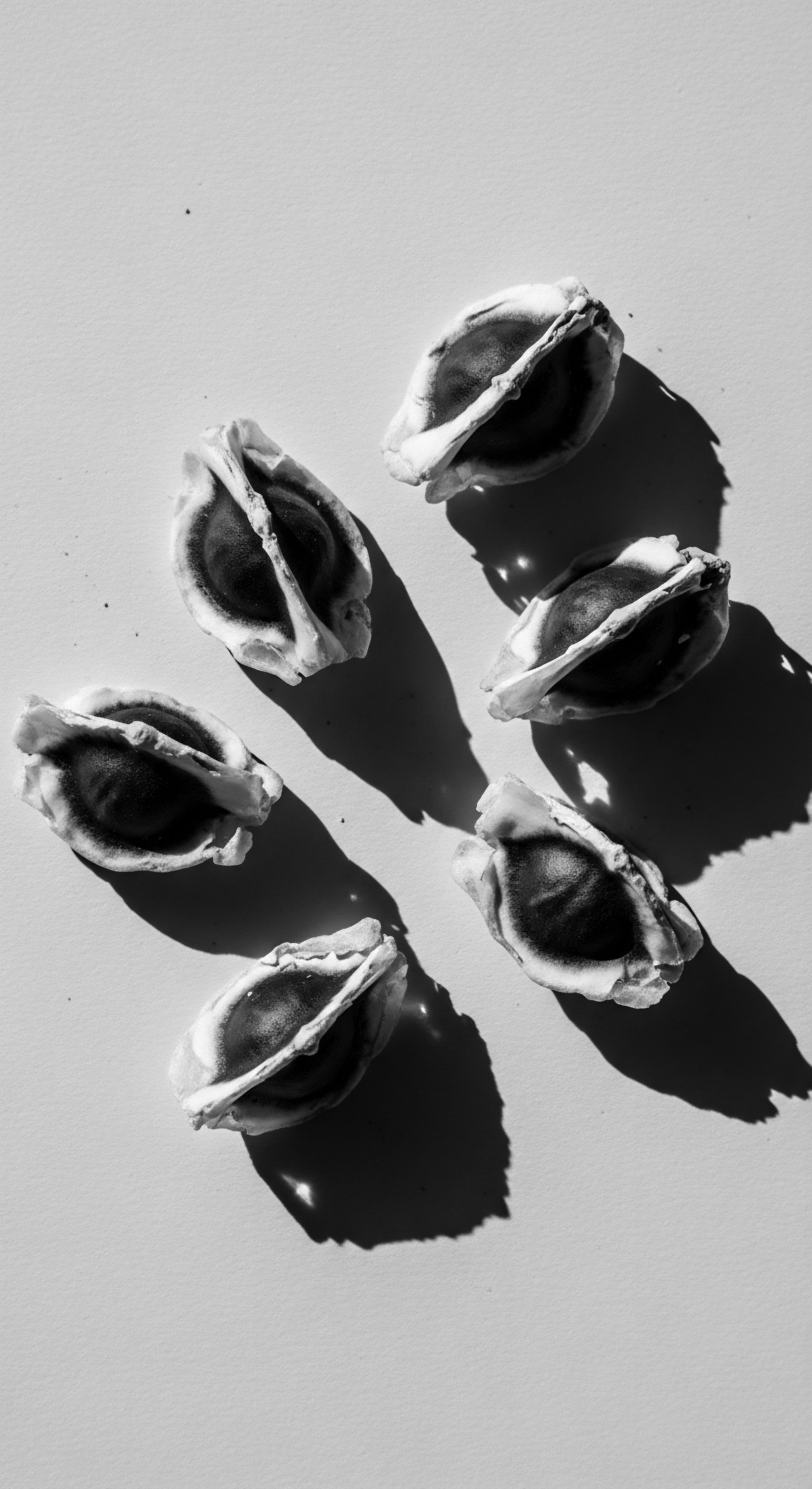
What Ancestral Styles Protected Textured Hair?
The protective styling encyclopedia of ancestral communities was vast and varied, reflecting the diverse cultures across Africa and the diaspora. These styles served as a primary defense against the elements and daily wear. They reduced breakage by keeping hair tucked away and minimizing manipulation.
- Cornrows ❉ One of the oldest braiding styles, cornrows (or canerows) involve braiding hair close to the scalp in continuous, raised rows. Dating back thousands of years, with evidence found in ancient African civilizations, they were both practical and forms of social and religious expression. They protected hair by minimizing manipulation and exposure to environmental factors.
- Twists ❉ These involve dividing sections of hair and twisting them around each other to form larger twists. Senegalese twists, for instance, have roots in Senegal. Twists, like braids, are a protective style that does not need product or bands to keep in place and were used to symbolize tribe, social status, and family background.
- Bantu Knots ❉ Hair is sectioned, twisted, and wrapped to form a knot-like appearance. This style is a protective one that minimizes hair manipulation and breakage. Bantu knots are recognized as a symbol of beauty and cultural heritage among Bantu ethnic groups.
- Locs ❉ These involve matting sections of hair to form rope-like strands. In some African countries, locs symbolized strength and were worn by warriors.
Beyond their practical benefits, these styles held deep cultural significance. In pre-colonial African societies, hairstyles were integral to expressing cultural identity and social affiliation, often signifying age, marital status, social rank, and spiritual beliefs.
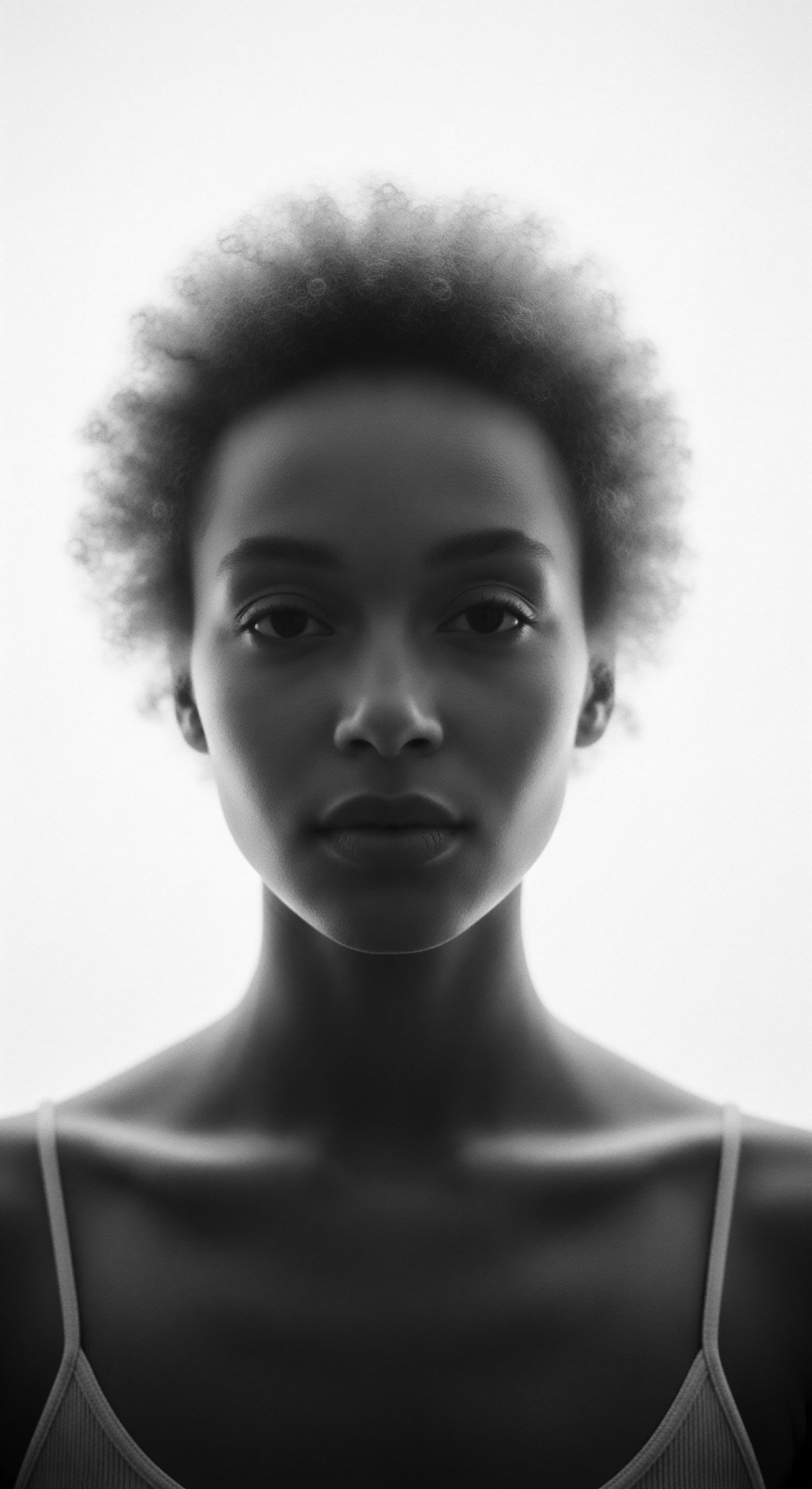
How Did Traditional Tools Aid Hair Preservation?
The toolkit of traditional hair care was crafted from the earth itself, utilizing materials readily available to fashion implements that supported hair health. Combs, often made from natural materials like wood or even fish bones in ancient Egypt, were designed to detangle and distribute nourishing oils. While scissors were not common south of the Sahara until later introductions, other tools such as pins and razors were used.
| Tool Combs |
| Material Wood, Ivory, Bone |
| Protective Function Detangling, distributing oils, minimizing breakage during styling. |
| Tool Hair Threading Tools |
| Material Flexible wool, cotton, rubber threads |
| Protective Function Creating protective styles, stretching hair, length retention, shielding from environmental factors. |
| Tool Head Wraps (Doeks) |
| Material Cloth, fabric |
| Protective Function Shielding hair from sun and elements, preserving styles, indicating social status. |
| Tool These tools, often simple in form, were instrumental in maintaining hair health and cultural expression. |
Head wraps, or “doeks” in South Africa, were not only practical for protecting hair from the elements but also served as powerful symbols of elegance and sophistication, often worn during important events. These coverings shielded hair from sun, dust, and cold, reducing environmental damage and preserving intricate styles for longer periods. The act of wrapping also compressed the hair, reducing friction and tangling, which in turn minimized breakage.
Traditional hair care was a communal activity, where shared knowledge and skilled hands transformed hair into a protective art.
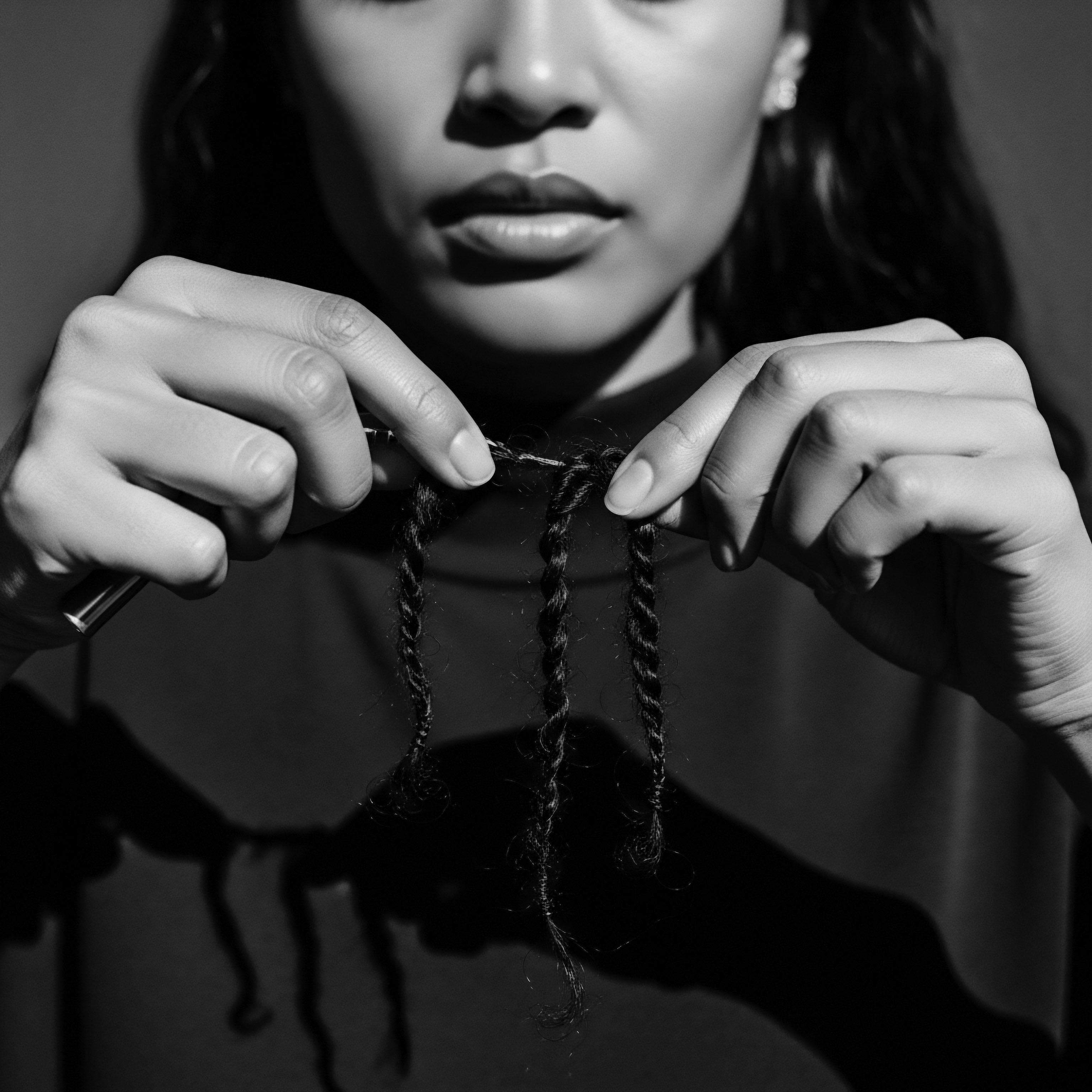
What Were the Historical Uses of Hair Extensions?
The use of hair extensions and wigs has a deep history, particularly in ancient Egypt, where they served both aesthetic and practical purposes. Wigs, meticulously cared for with emollients and oils, guarded wearers’ natural hair from lice and offered comfort in the hot climate. Hair extensions were often tied up at the back, enhancing appearance and creating thicker styles. This practice speaks to an early understanding of adding volume and length while also protecting one’s own strands.
The tradition of hair braiding itself, dating back to at least 3500 BC, is more than just a hairstyle; it is a story passed down through generations. The process of creating elaborate hairstyles often involved washing, combing, oiling, twisting, and decorating the hair, allowing for the sharing of cultural traditions and strengthening community bonds.
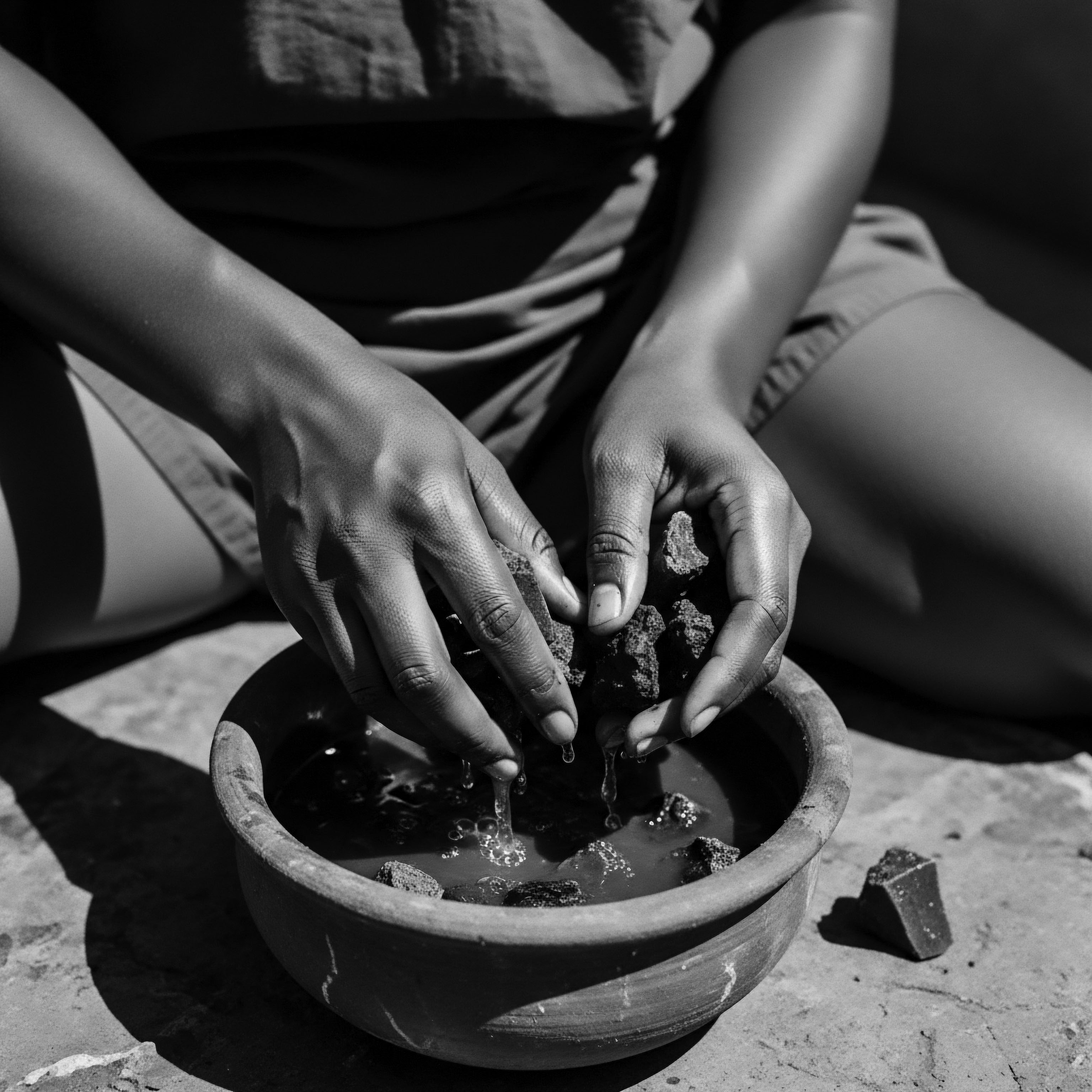
Relay
To truly grasp how traditional methods shielded textured hair, we must look beyond the mere mechanics and delve into the interwoven tapestry of biological imperative, cultural preservation, and ancestral wisdom. The query before us is not a simple historical accounting; it asks us to understand the enduring legacy of practices that were, at their heart, acts of resilience and identity. How do these age-old customs, steeped in heritage, continue to inform and inspire our understanding of hair’s fundamental needs, even in a modern context?
The holistic influences on hair health, deeply rooted in ancestral wellness philosophies, underscore a profound connection between the body, spirit, and the natural world. These traditions recognized that hair health was not isolated but reflected overall well-being, influenced by diet, environment, and spiritual harmony. This perspective contrasts sharply with a fragmented, problem-solution approach, inviting a return to a more integrated understanding of care.
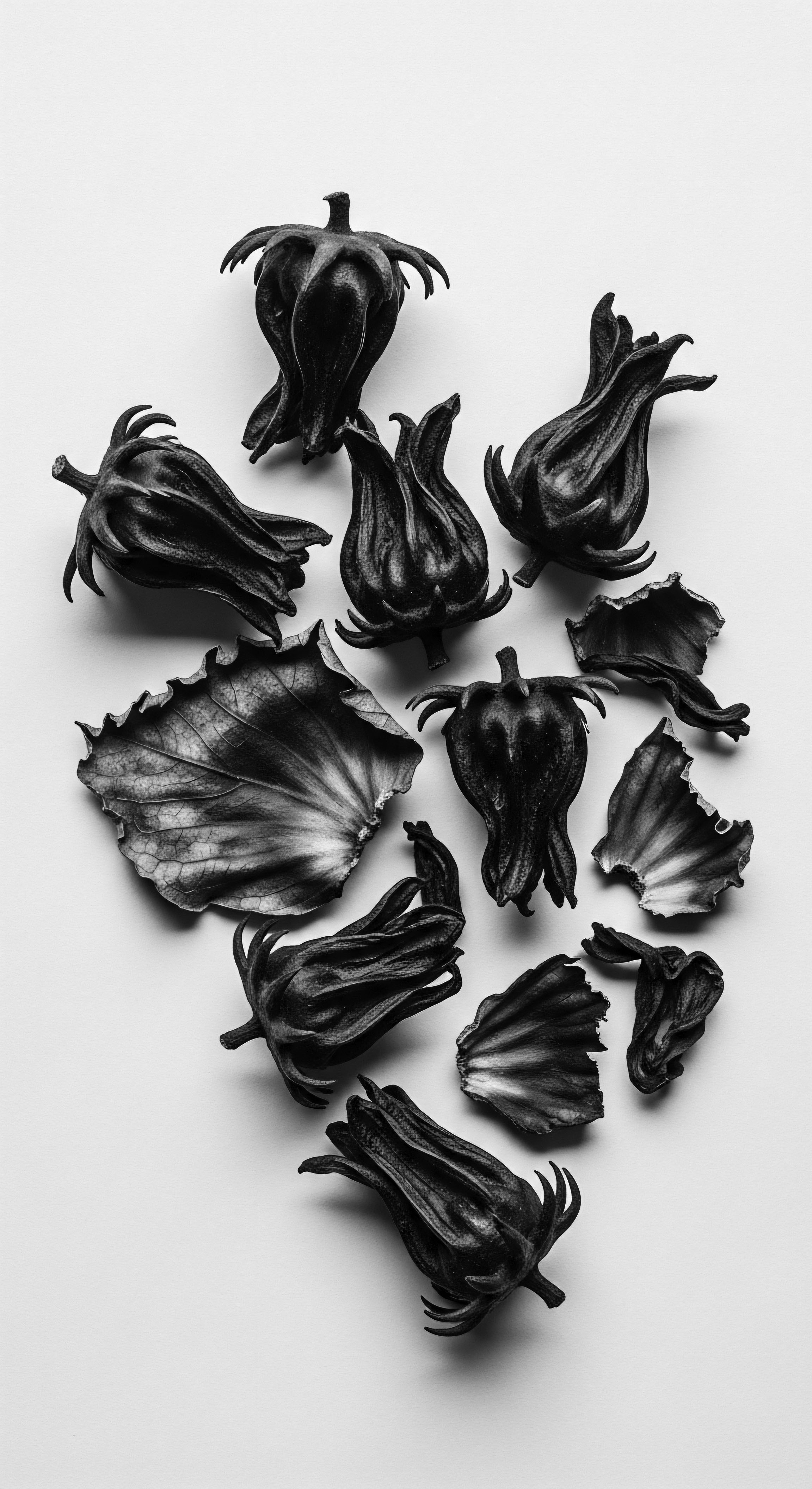
How Do Ancestral Ingredients Support Hair Integrity?
The earth itself provided the foundational ingredients for traditional hair care, substances chosen for their intrinsic properties to moisturize, strengthen, and protect. These natural components, often sourced locally, were the pharmacopeia of ancestral hair practices, passed down through oral traditions and communal application. Their efficacy, validated by centuries of use, now finds resonance with contemporary scientific understanding.
- Shea Butter ❉ For millennia, shea butter has been a cornerstone of West African hair care. Rich in vitamins A, E, D, and F, and essential fatty acids, it creates a protective barrier, shielding hair from dryness and breakage. Its moisturizing and sealing properties make it invaluable for textured hair, which tends to be dry.
- Castor Oil ❉ A staple in ancient Egyptian hair care routines, castor oil was renowned for its moisturizing and strengthening properties. It was often mixed with other natural ingredients to create hair masks that promoted growth and added shine.
- Aloe Vera ❉ Used by Native American tribes and in Latin American traditions, aloe vera soothes the scalp, helps with dandruff, and provides significant hydration and shine to hair.
- Moringa Oil ❉ Derived from the seeds of the moringa plant, this oil is packed with antioxidants, vitamins, and essential fatty acids. It serves as a versatile treatment for hair, protecting it and promoting growth.
These ingredients, applied as butters, oils, or rinses, were not simply topical treatments. They were integral to a regimen that sought to maintain the hair’s natural moisture balance, reduce tangles, and fortify the strands against environmental stressors. The wisdom in their selection lies in their natural compatibility with the unique needs of textured hair.
Traditional ingredients, like shea butter and castor oil, provided deep nourishment and a protective seal, a testament to ancestral botanical wisdom.
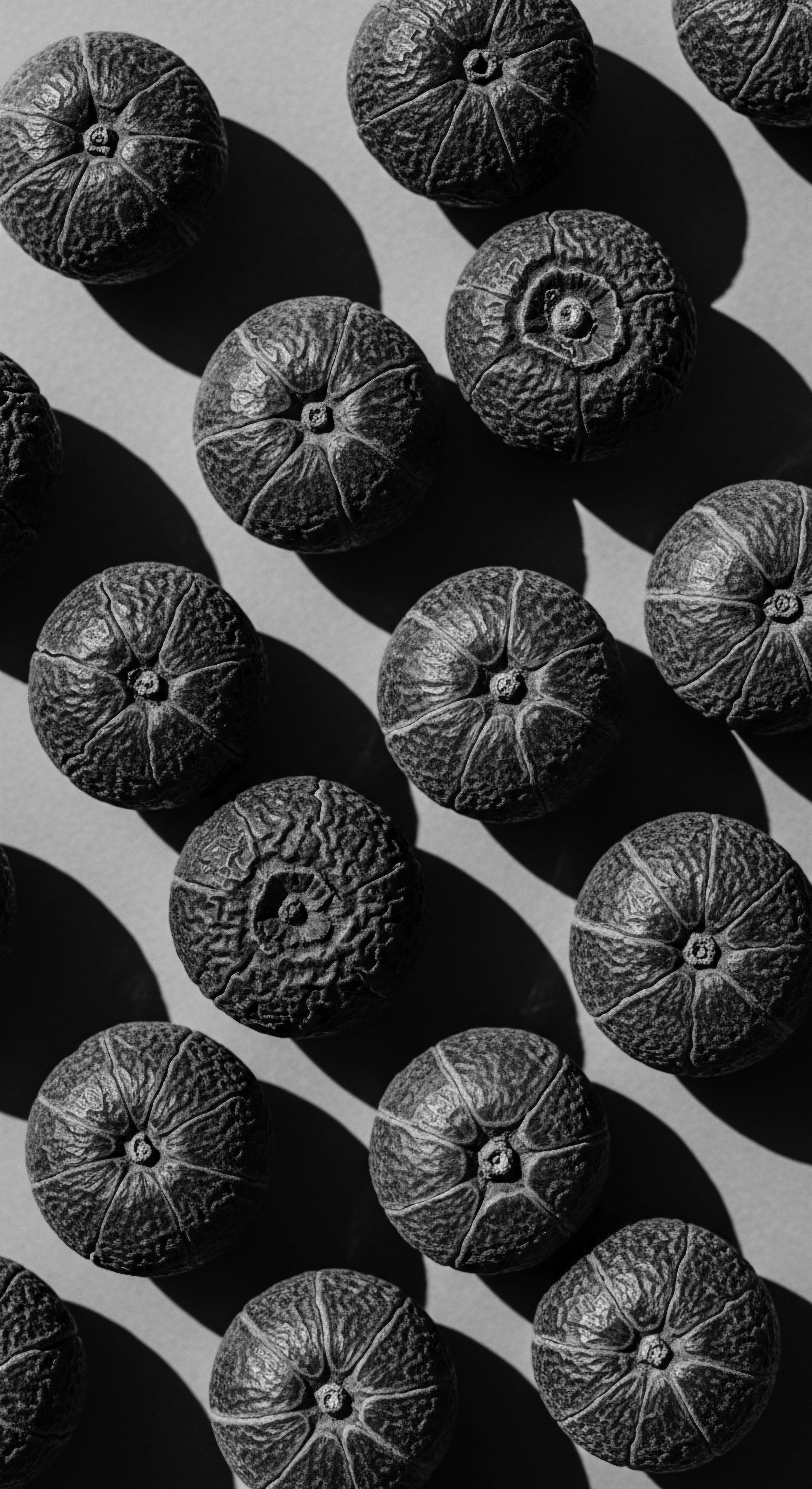
What is the Heritage of Nighttime Hair Protection?
The practice of nighttime hair protection, particularly the use of head coverings, carries a deep cultural and historical significance. It speaks to an understanding of preserving the day’s styling efforts and safeguarding hair from friction and moisture loss during sleep. Neckrests, for instance, were used across Africa to protect elaborate coiffures while sleeping.
While the modern bonnet might seem like a contemporary innovation, its lineage traces back to these ancestral methods of protecting hair during rest. This ritual ensures that the hair remains hydrated, minimizes tangling, and prevents breakage that can occur from rubbing against rough surfaces. It is a quiet, yet powerful, act of preservation, a continuation of care that honors the hair’s delicate nature.
A notable case study illustrating the deep connection between traditional practices and hair health comes from the Basara women of Chad. Their centuries-old practice involves applying a homemade mixture, often referred to as “Chebe,” to their hair. This blend, typically containing a powder from the Chebe plant mixed with oils and animal fats, is applied to the hair and then braided.
This ritual is directly linked to their remarkable length retention, with many women in the Basara tribe known for their incredibly long hair. This is a powerful, specific historical example of a traditional method directly shielding textured hair and contributing to its robust health over generations.
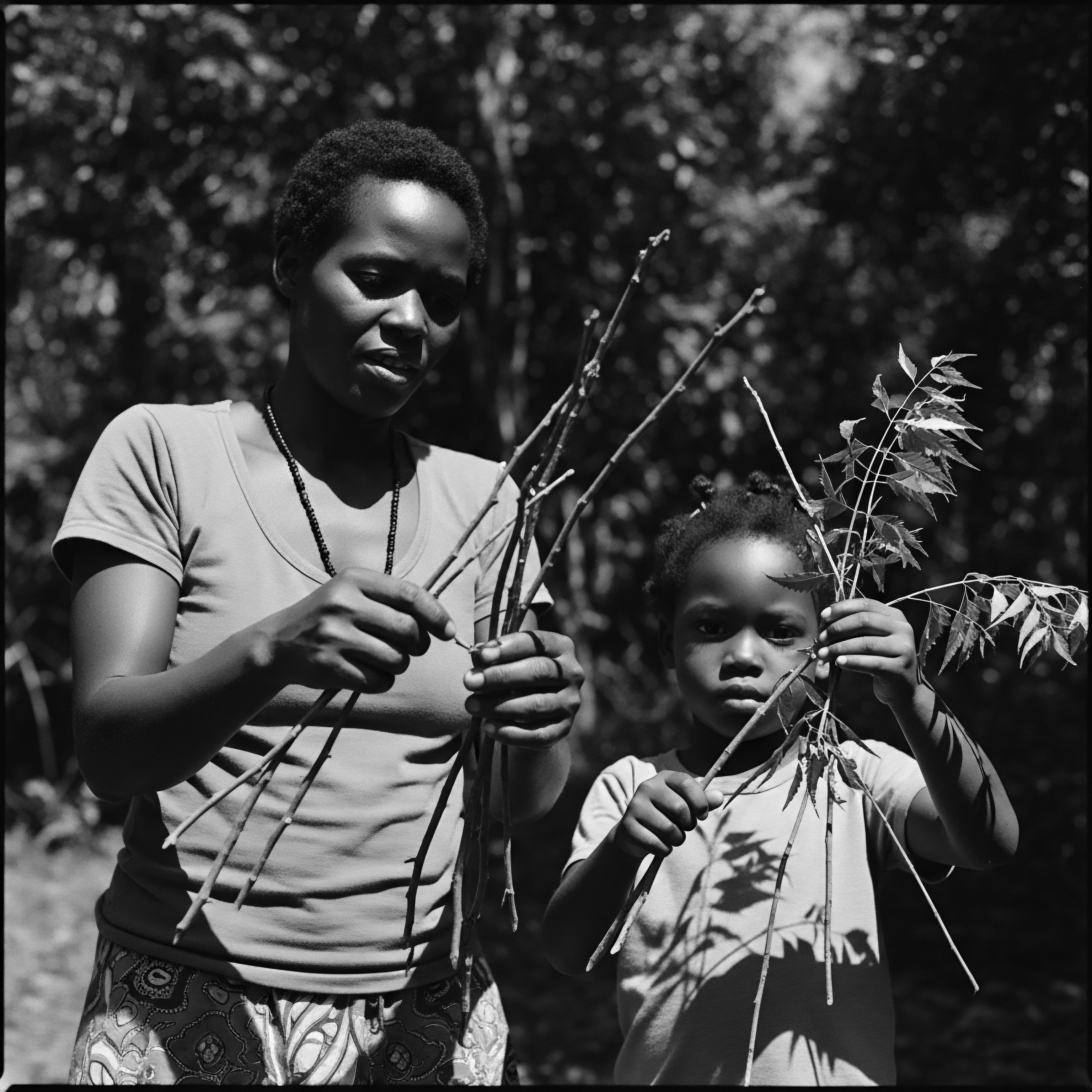
How Did Communities Address Hair Challenges?
Ancestral communities approached hair problems with a blend of practical remedies and a holistic understanding of well-being. Issues like dryness, breakage, or scalp irritation were not seen as isolated ailments but as imbalances that required a return to natural harmony. The solutions often involved specific botanical preparations, dietary adjustments, and communal care rituals.
For example, Native Americans used various plants for scalp health and hair growth. Yucca root was crushed and mixed with water to create a natural shampoo, promoting clean and nourished hair. Other ingredients like aloe vera, sage, and cedarwood oil were also employed for their specific benefits.
For an itchy scalp, bearberry was used to make a tea, mixed with grease and boiled cattle hoofs to create a salve. These traditional approaches highlight a resourceful and interconnected system of problem-solving, drawing directly from the natural world.
The resilience of textured hair, often prone to breakage, was addressed through consistent protective styling and nourishing applications. The deliberate choice of styles that minimize manipulation and exposure to environmental elements, such as braids, twists, and locs, has been a long-standing strategy to guard against damage. This deliberate approach to hair care was not just about aesthetics; it was a deep, practical understanding of how to maintain the vitality of hair that was, and remains, a crowning aspect of identity and heritage.
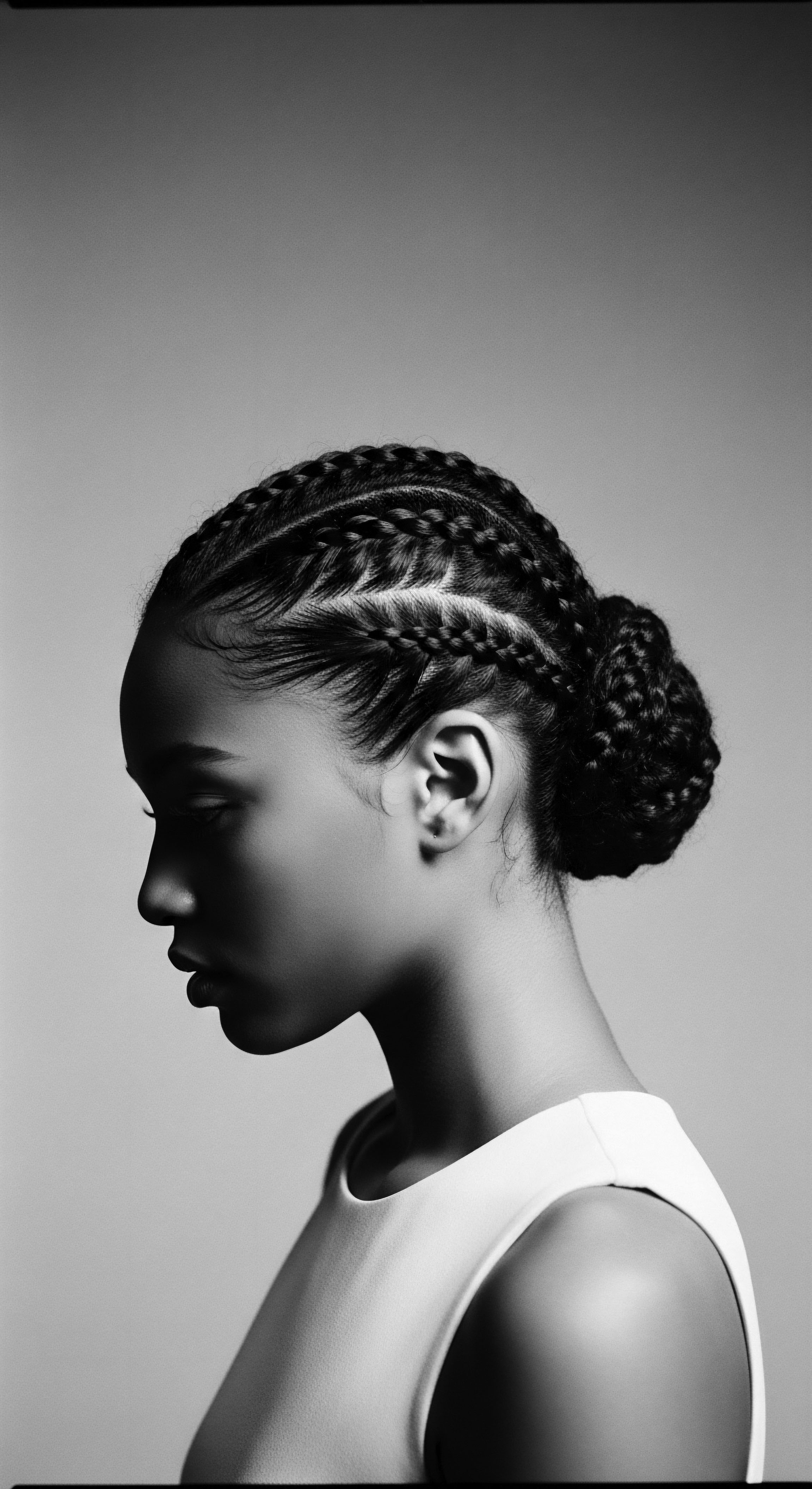
Reflection
As we close this exploration into the traditional methods that shielded textured hair, we find ourselves standing at a profound crossroads where ancient wisdom meets the rhythms of contemporary life. The echoes from the source, the tender thread of ritual, and the unbound helix of future possibility all converge, reminding us that textured hair care is a living, breathing archive of heritage. It is a story told not just through scientific understanding or historical fact, but through the enduring legacy of touch, communal practice, and the deep, abiding respect for the hair that crowns us.
The practices of our ancestors were not mere happenstance; they were meticulously honed responses to the unique needs of textured hair, imbued with cultural meaning and spiritual reverence. This enduring wisdom continues to guide us, inviting a soulful approach to care that honors our lineage and shapes a resilient future for every strand.
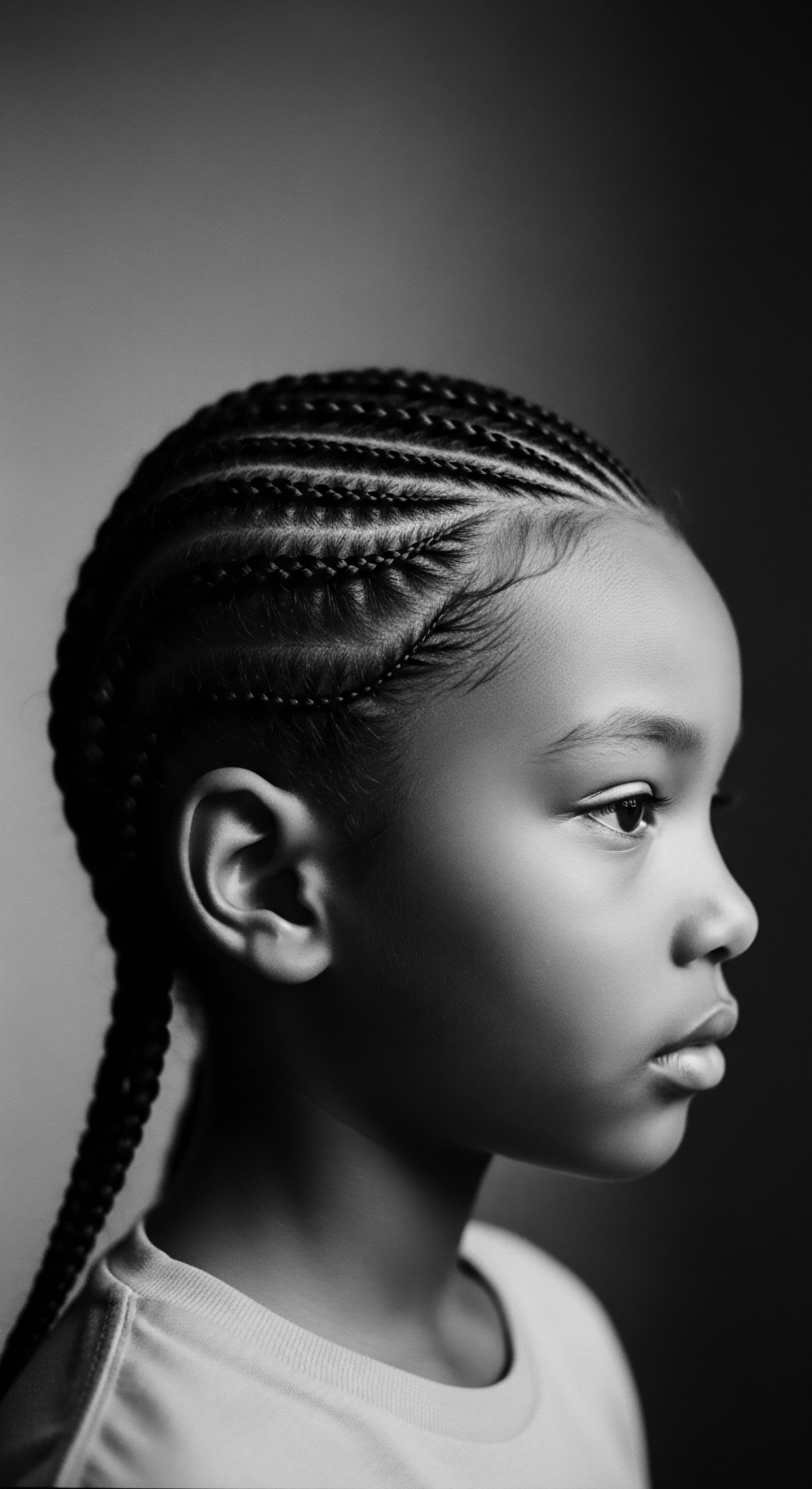
References
- Afriklens. (2024). African Hairstyles ❉ Cultural Significance and Legacy.
- The Afro Hair & Skin Co. (2023). Embracing Tradition ❉ The Lost Art of African Hair Threading.
- Byrd, A. D. & Tharps, L. D. (2001). Hair Story ❉ Untangling the Roots of Black Hair in America. St. Martin’s Press.
- Glam O’ Sphere. (2024). Traditional African Hair Braiding Techniques.
- Jacobs-Huey, L. (2006). From the Kitchen to the Salon ❉ Black Women’s Hair Care and the Cultural Politics of Identity. Rutgers University Press.
- Karethic. (2018). The benefits of organic shea butter for hair.
- L’Oréal Paris. (n.d.). Protective Hairstyles For Natural Hair.
- Prose. (2020). The Evolution of Black Hair Care.
- The Purple Pulse. (2024). Protective hairstyles hold cultural significance.
- ResearchGate. (n.d.). Hair care practices in African American women.
- Substack. (2025). Ancestral Hair Rituals to Nourish Your Hair and Soul.
- TheCollector. (2022). Ancient Egypt’s Most Indulgent Beauty Secrets.
- Tiwani Heritage. (2020). NATURAL HAIR ❉ FULL-CIRCLE EVOLUTION THROUGH THE AGES.
- University of Michigan. (n.d.). Black Women and Identity ❉ What’s Hair Got to Do With It?
- Wikipedia. (n.d.). Protective hairstyle.
